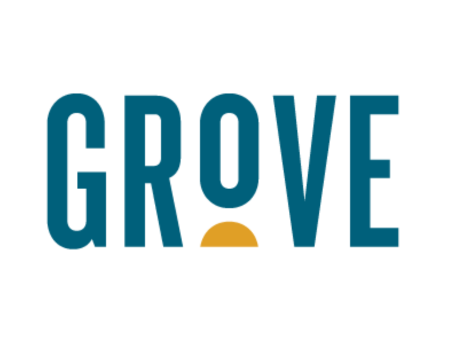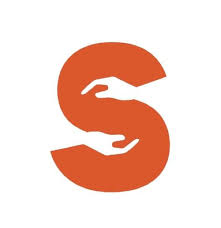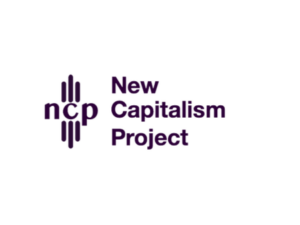Grove Social Impact Partners is a group of social impact consultants that draws on the expertise of veteran social entrepreneurs to help organizational leaders push forward their sector-changing ideas and solutions.
J.B. Schramm of Grove Social Impact Partners spoke with Catherine Edwards on April 13, 2023. Click here to read the full conversation with insights highlighted.
Catherine Edwards: To begin with, could I ask you to introduce yourself, your role in your organization, and also tell me what the problem is that your work is trying to address?
J.B. Schramm: My name is J.B. Schramm, I’m a Skoll Fellow from my work with PeerForward, which used to be called College Summit back in the day. I’m now the founder and managing partner of Grove Impact. The issue behind Grove Impact is that solutions to some of the world’s biggest, most pressing challenges are often developed by leaders of companies, nonprofits, and universities, who are wrestling with those challenges every day. Unfortunately, those same leaders are often too busy running their organizations to have the time to move those big ideas. Grove is a group of veteran social entrepreneurs, many of them from Skoll, WEF, Echoing Green, Ashoka, New Profit. What we do is we bring groups of social entrepreneurs to help these leaders move their big idea, when the timing is right.
Catherine Edwards: Could you please talk about how you do that, what the process is and how that works in practice?
J.B. Schramm: I’ll give you an example. One of the leading Black real estate developers in the United States is a guy named Bo Menkiti. He saw firsthand the racist barriers to capitalizing Black real estate and developers. He had some ideas about how you could improve capital flow to Black and Hispanic developers who have proximity to the neighborhoods they’re developing. When George Floyd was murdered, he got the impetus to write down his idea. But six months later, that idea was still just written down on a sheet of paper. Often, the leaders have that idea, they sketch it on the napkin, but then it stays on the napkin.
Bo came to Grove to get it off the napkin and into reality. He engaged us, and we built a team of social entrepreneurs. Our lead team member is an award-winning social entrepreneur in the US named Derwin Sisnett, who built the first nonprofit real estate development company focused on developing neighborhoods in low-income areas, focused on schools. Real estate development focused on the learning of young people. We heard from Bo what he sensed were the barriers in the market, where he sensed there were constraints on the growth of Black and Hispanic developers. But when we looked for the research to document the scope of the problem, we couldn’t find any.
In response, we partnered with Michael Porter’s research team out of Harvard called Initiative for a Competitive Inner City, to do research, landscaping the Black and Hispanic developer field. Three weeks ago, The New York Times did a feature story on our research, highlighting what we found around constraints in the market, and the representation crisis, which is that in a country where one third of Americans are Black and Hispanic, less than 1% of real estate developers are Black and Hispanic.
That was work we did on the nonprofit side to move this conversation forward. On the for-profit side, we’ve worked with Bo to design a real estate investment fund that will capitalize Black and Hispanic developers who have proximity, who have a neighborhood focus, and who are at the growth levels that our research shows get constrained by the market.
That is one example. In another example, we are working with an education nonprofit that received Rescue Plan dollars to deliver their innovation, which formerly had been done through schools and through school districts. Now they had the opportunity to deliver it at the state level. They felt great about their ability to deliver the program with the state funding them, but they didn’t feel great that they could do that while figuring out the product package for state engagement, and how that product fits in with their school and district delivery, and how that work could be mutually reinforcing. We brought in a leading social entrepreneur who’s helped them do that.
One other example is a major university that has a vision for how their next multi-billion-dollar capital campaign could be focused not just internally on growth, but externally on the impact that they can have in the world. They brought us in to help them engage with their leading alumni and their cross-disciplinary faculty, and to help them design and engage partners around how that university could have impact on some of the most pressing issues facing the planet.
At the center of each of these examples is an idea envisioned by a leader. It’s their idea, their innovation. Grove helps them move it. That work could look like a traditional impact consultant that plans and researches. But what makes Grove special is that beyond planning, we can do implementation. We can help you raise the funds, we can help you build that curriculum, we can help you engage directly with your stakeholders to get them aligned to your vision. The things that social entrepreneurs have learned how to do and have practiced.
Catherine Edwards: What is it that makes Grove able to do that while other organizations or consultancies couldn’t?
J.B. Schramm: Grove is composed of world-class social entrepreneurs. This is what we’ve all been doing in our careers.
Catherine Edwards: How do you make those connections with the people who are at the stage where you can really help them? And then, how do you go about building the team and finding the right people that can help with that specific organization and their problem?
J.B. Schramm: We find the innovators with the big ideas through one of three ways. One is through foundations that care about a given space, and have amazing grantees who have big ideas. Those foundations will create a fund for Grove, usually a matching fund. Let’s say two or three of their grantees have big ideas that the foundation really believes in. The foundation provides dollars that the organization matches, so that they can then have the entrepreneurial capacity to move the ideas. Often we work through foundations who care about a given space and we help innovators in that space move their big ideas.
Second is through our social entrepreneur network. Many of our social entrepreneurs are running major organizations, whether it be in the nonprofit or for-profit world, and they bring ideas to us that they want to move for their own mission. Finally, we also have our own network that we tap into to find big ideas.
How do we build our network? I’ve just had the good fortune of being a part of some of the leading social entrepreneur networks like Skoll, Ashoka, the World Economic Forum, Aspen Institute, New Profit and Echoing Green. We find amazing social entrepreneurs in a wide range of fields from those networks. This year we’ve done work in real estate, community development, post-secondary, K-12, global education and philanthropy. We’re able to help move big ideas in a wide range of fields because our networks of social entrepreneurs represent a wide range of fields.
Catherine Edwards: Over the time you’ve been doing this, what are some key insights or teachable lessons you could share if someone else wanted to replicate this work? What would you say someone should know when starting out that might save them time or help them succeed?
J.B. Schramm: A big insight for leaders in social change is to think more about competencies and less about roles. Successful social change most often relies on cross-sector and interdisciplinary strategies, bringing different players together from industry, government, the academy, and nonprofit sectors. When trying to move a solution in the midst of that kind of complexity, it can be difficult to find a person or to define a role that brings together all the necessary perspectives.
Instead of trying to find the necessary role, consider naming the needed competencies to move the idea. Those competencies can be sourced more easily than roles because the competencies can be pieced together from different people, different organizations, or different sectors. As a leader, if you come with a frame of competencies you are more likely to see a path forward for getting your idea off the ground. Whereas if you’re stuck in roles, it might seem more daunting than it really is.
Catherine Edwards: How do you measure success? What evidence do you have that you are making progress?
J.B. Schramm: We measure success based on the big idea that the person has. For example, in the community development and real estate and racial equity project I described, our measure of success was around raising the profile of Black and Hispanic developers. One example of profile raising success is coverage from The New York Times and other media outletsFocused on our research. This is a rather short project, but it’s a key milestone in that process. In terms of raising the fund, we’ve raised $20 million for that real estate fund for Black and Hispanic proximate developers so far, including a $10 million investment from a leading life company.
Catherine Edwards: Who defines the measurement for success? Is it you or is it the people who come to you with what they want to do?
J.B. Schramm: The people with the big ideas. It’s their idea, so they know what the markers of progress for implementing that idea should be and its ultimate impact.
Catherine Edwards: Could you talk a bit about anything that hasn’t gone well, maybe something you’ve tried that didn’t work as expected or any difficulties that you’ve had to overcome? I ask because, from all of these interviews, people often learn just as much from what didn’t work as what did.
J.B. Schramm: I’d say two things. First, there are some challenges in the philanthropic world that views social entrepreneurs as a standalone solution. The status quo view thinks of social entrepreneurs as a resource only for their own invention. However, in most cases, social entrepreneurs are both an expert innovator in their field of origin and also a skilled entrepreneurial resource who can work in service of somebody else’s vision. That’s something we’ve been trying to work with funders to see: How you can disentangle the generic entrepreneurial skill from their work on their mission-specific invention.
Another difficulty stems from the fact that the projects we work on are complex. We’re organizing a series of design events for one of our partners, a very large organization with lots of leadership silos that each have significant authority and power. Historically, they’ve not done a lot of cross departmental collaboration. A couple months ago, we did an event with some of their partners, and the event did not go well because we hadn’t gotten enough alignment across the departmental leaders. Based on the lessons from that challenging event we were able to redesign and facilitate a second event built on more intentional interdisciplinary alignment. This second event worked brilliantly.
Catherine Edwards: What did you do then to achieve that alignment? When you said it wasn’t there and then you were able to help, what were the steps?
J.B. Schramm: We brought everyone together, we gave very direct feedback on what we thought had worked and what hadn’t. I think that feedback resonated with those who had participated in the original event. The organizational leaders within the institution were not used to getting lots of feedback, because within the institution they usually function as the kings of their domains. The Grove team was comfortable raising these issues, because as social entrepreneurs you learn how you gracefully speak truth to power. We were able to offer feedback and restructure their content. It was actually a great learning opportunity for the institutional leaders to see how they can learn from one another, and from outsiders.
Why were the institutional leaders receptive to Grove’s feedback? The leaders are interested in fundraising to resource their visions and the Grove team working on the project has raised over $300 million in their careers. It is also important that the Grove entrepreneurs were both graceful and unapologetic in their advocacy. Social Entrepreneurs know that to change the system requires pushing on parts of the system in ways that may feel uncomfortable. Social entrepreneurs understand and know the benefit of pushing.
Social entrepreneurs have made careers of being willing to take risks, much more so than the average consultants. Risk taking is not prized in management consulting, but risk taking is essential for social entrepreneurs. We’re able to take risks and push on elements that are strategically valuable.
Catherine Edwards: Are you working to advance system-level change in your field?
J.B. Schramm: One barrier blocking systems change is the problem of the ticking clock. The pace of change that we need at this moment is fast, so we’re trying to add a more agile tool for solving problems. If you’ve got a promising idea, you don’t have to spend 12 months hiring somebody to develop the idea, committing ongoing infrastructure before the idea has been tested in the market. With Grove, you can move your idea without taking on ongoing costs before the idea is proven. You can move quickly, because you’ve got a team of Grove entrepreneurs practiced at standing up initiatives and experts in your content area. We want to speed the pace of change.
In the social entrepreneur field, one systemic challenge is that there are too few off ramps for founder CEOs. If you’re a founder CEO and it is time to move on from your organization you have limited options. You can start a new thing if you’ve got a big new idea and are prepared to spend another 15 years on it. Otherwise, you can switch over to philanthropy, which can add value to the field, although it takes you away from the skill set you are uniquely good at, which is being an entrepreneur. Or you can set up your own consulting shop. Those three options aren’t attractive for many. As a result, too many social entrepreneurs stay in their CEO seats too long.
That was my experience at PeerForward, where I remained CEO two or three years too long. Grove is aiming to build a new attractive offramp that will allow more social entrepreneurs to say what, “You know what? I don’t know what I’m going to be doing long term, but I could go with Grove and have an impact right away, and do what I’m gifted at.” It can give social entrepreneurs the freedom and confidence to step away from their “baby,” at the most strategic time. I think that’s another system change and narrative change Grove is helping to advance.
Catherine Edwards: In order to achieve that, are there other actors that need to get involved to help achieve this? Is there something else that you think is needed to achieve those changes?
J.B. Schramm: I think the key actors are funders who can understand how big ideas can advance in their fields with this new kind of capacity. To create enough opportunities for that to happen, we want this idea to not be seen as, “That’s something Grove provides,” but rather, “This is an attractive human capital solution for the industry.” We want social change leaders to understand that when they have a big idea, they can accelerate it with entrepreneurial capital.
Catherine Edwards: How do you see your work in Grove evolving over the next five years or so?
J.B. Schramm: The next five years are about raising the profile of “entrepreneurial capital” as a solution for innovators who want to move a big idea at the right time, and for social entrepreneurs who want an alternative way to spread their gifts.
Our aim is that in five years innovators will see entrepreneurial capital as a ready resource for moving big ideas from concept to concrete. At the same time, when social entrepreneurs are beginning to think about succession planning, we want this approach, this off-ramp, to be accessible to all of the top social entrepreneurs.
Catherine Edwards: How are you going to work on spreading this? What are the first steps?
J.B. Schramm: As you can imagine, the best way is through word of mouth. We have some great initiatives happening that are getting people excited about this approach, but we’re also trying to figure out a way that can alert foundations about this opportunity. Entrepreneurial capital is a new type of resource, so we need to raise its profile. We’re looking at different ways, including the opportunity to talk with you, to alert more people to “entrepreneurial capital” as a powerful new social impact resource.
Catherine Edwards: Thank you so much, this was a really insightful conversation.
Click here to read the full conversation with insights highlighted.
Catherine Edwards is a journalist and content strategist based in the UK, having also lived and worked in Germany, Italy, Sweden and Austria. She supports newsrooms and mission-driven organisations with content strategy, audience development and constructive journalism.
* This interview has been edited and condensed.
Read more insights from what’s working in social change sectors.







